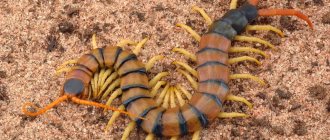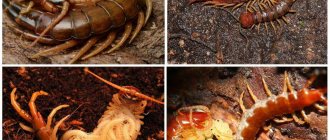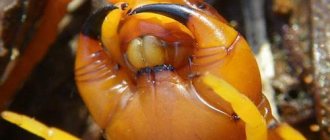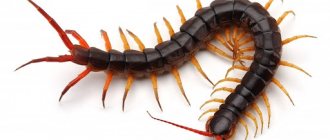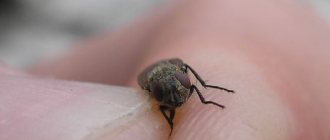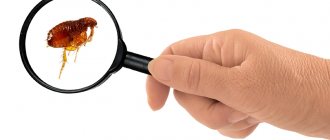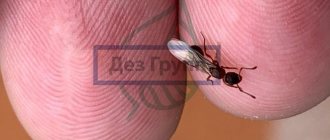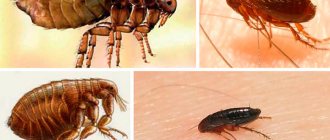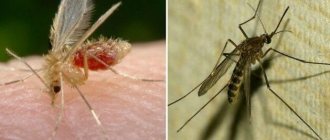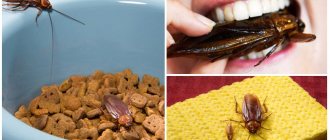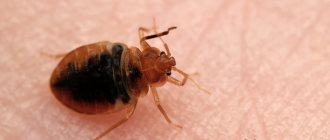What insects are considered unsafe in Crimea?
Dangers of Crimea that every tourist should know about
Spider Karakut. This large, sleek and black insect is the most dangerous on the peninsula, as its bite can be fatal. Karakut is not prone to deliberate attacks; it bites to defend itself. For example, if a person steps on a spider, the insect will definitely bite him. Within half an hour after the bite, the person becomes ill, cramps occur, muscles, stomach, chest ache, and the temperature rises. As an emergency measure, it is recommended to cauterize the bite site, after which the victim must be urgently taken to the hospital.
The poisonous spider is found on Cape Tarkhankut (western part of Crimea, Olenevka village), in the area of Kerch and Evpatoria. The likelihood of becoming a victim of Karakut is very low; over the past 10 years, no deaths caused by a spider bite have been recorded. But you still need to be extremely careful, especially in those places where cobwebs are visible.
First aid: Cauterize the bite site, after which the victim must be urgently taken to the hospital.
Karakut is the most poisonous spider in Crimea
Scolopendra. This is a 10-15 cm brown or greenish centipede, with red-orange legs. If an insect simply runs over the body, irritation appears on the skin, pain occurs, and the temperature may rise. If the scolopendra stings, the bite site swells greatly and an allergic reaction occurs. Scolopendra will not cause harm to an adult without health problems. But it is very dangerous for a child or a person suffering from heart disease. Such people need urgent medical attention.
Scolopendra is found everywhere and can leave a painful mark on human skin.
The habitat of the scolopendra is the southern part of the peninsula. The insect is most common in Sevastopol, but is also found in other areas. The peak of toxic activity occurs in the spring, especially in May. The risk of encountering scolopendra is high for lovers of hiking trips with an overnight stay in the forest.
First aid : disinfection of the bite site, applying a bandage, taking antiallergic medications.
Crimean scorpion. Its bite is not fatal, but can cause poisoning of the body. Just like the scolopendra and the Karakut spider, this arthropod hides under stones during the day, and becomes active at nightfall, so it can end up in a tourist tent or sleeping bag. A scorpion sting is accompanied by severe pain, swelling, less often headache, vomiting, and suffocation. First aid for the victim is a cotton swab with ammonia applied to the wound. If your condition worsens, you should immediately go to the hospital.
The habitat of the Crimean scorpion is the South Coast.
First aid : suck the poison out of the wound, treat it with alcohol, apply a bandage. Before being taken to the hospital, the victim must be in a supine position, and the bitten limb must be immobilized.
Crimean scorpion: a dangerous insect that has poor vision, but has an excellent sense of touch.
Horseflies
Peak activity from May to September. Large flies drink the blood of mammals and humans. Females are blood-sucking. Clusters of insects are always located near bodies of water. The bites are painful. But the danger lies elsewhere. People with an allergy to insect saliva may experience anaphylactic shock. In addition, horseflies are carriers of a number of dangerous diseases: filariasis, tuleryemia, anthrax. To protect yourself from biting flies, you need to use repellents. On a note! Some species, for example Smirnov's horsefly, are on the verge of extinction in Crimea.
Destructive flora: dangerous plants of Crimea
Is it dangerous to walk through the forests of Crimea? To a certain extent, yes, because on a walk you may come across beautiful and attractive plants that are considered poisonous.
- Crow's eye. A toxic plant, but its dark blue berries, similar to blueberries, are especially poisonous. If you eat such “beauty”, then severe poisoning is guaranteed.
Crow's eye is a poisonous plant, the fruits of which can be confused by both children and adults with blueberries.
- Yasenets (Burning Bush, Asterisk). The lilac or pink flowers of this plant cause severe skin burns within a few hours of touching it. The ash tree is not dangerous to the body, but after it heals, scars remain. Grows in all forests of Crimea.
Ash tree has a pleasant citrus aroma, but even inhaling the pollen of this plant can cause a burn to the respiratory organs.
- Aconite (wolf root, king potion). The plant with blue flowers grows in beech forests and is considered completely poisonous. Affects the central nervous system, causing convulsions and paralysis of the respiratory organs.
Aconite is unknowingly used to brew tea, which leads to severe headaches and hallucinations.
- Belladonna. A plant with a purple fruit like a small cherry. If you eat it, it begins to burn in your mouth, it becomes difficult to swallow, your heart rate increases, and hallucinations are possible. If a person is not helped in time, the outcome can be very unfavorable.
Belladonna berries, which look appetizing in appearance, taste like cherries, which is why children are often poisoned by this plant.
- Bollygolov. Looks like a parsley bush in the flowering stage. Both the leaves and fruits of this plant are dangerous - they paralyze muscles, legs, and the skin loses sensitivity. Respiratory paralysis is especially dangerous.
Hemlock venom can cause food poisoning, convulsions, and paralysis.
Elderberry, datura, Crimean wolf's bast, yew, and black henbane pose a certain danger. Poisonous plants grow everywhere, so before going into the forest it is advisable to ask local residents about them.
First aid for poisoning with poisonous plants : induce vomiting to cleanse the stomach, take activated charcoal, an antipyretic. In the case of black eye, vomiting cannot be induced; only the use of activated carbon is recommended. In the case of plants that cause skin burns, wash the affected area with soap and use anti-burn ointment.
Beautiful and unusual entomofauna of the peninsula
The most beautiful insects in Crimea live not only in protected areas. Unusual specimens are found in parks, squares and even in private plots.
- Scolia giant wasp. The species is on the verge of extinction and is therefore listed in the Red Book. The size of the female reaches 5.5 cm. Against the background of a black body, wide purple wings and a bright yellow sternum look impressive. The entire body is covered with black and red hairs. The insect not only has beautiful bright colors, but also an extraordinary lifestyle. Scolia larvae parasitize the larvae of rhinoceros beetles, as well as beetles. The insect builds numerous tunnels in the soil, looks for a victim, paralyzes it and lays one egg at a time. So the offspring of Scolia do not experience a lack of nutrients, gradually eating away the insides of the host, consuming vital organs only at the end. Giant scolia are not only a decoration of the Crimean entomofauna, but are also among the largest insects in Crimea.
- The Xylocopa is a solitary hunter bee, often called the purple bumblebee because of its coloration. The size of the insect reaches 3 cm. The body is black metallic, densely covered with black hairs, decorated with small transparent wings with a purple tint. It does not have an aggressive disposition; it ignores human presence.
- The largest butterflies in Crimea are the Saturnia pear, also known as the peacock-eye, with a wingspan of 15 cm, swallowtails with a wingspan of up to 95 mm, podalirium, which has a wingspan of 7.2 cm, and polyxena (wingspan of 5.4 cm). In addition to their size, butterflies are distinguished by the original pattern on their wings. Seeing polyxena is very rare, as the species is on the verge of extinction. Only 4 species of vines serve as food sources for the caterpillars of this butterfly.
- Several species of hawkmoth butterflies have been preserved in Crimea: oak, oleander, etc. Occasionally, a rare species is found - the Death's Head. The individual is notable for having a pattern on its chest that resembles a human skull. The Death's Head caterpillar is also characterized by a memorable appearance - bright yellow, yellow-blue, yellow-lemon with blue oblique stripes. At all stages of development, hawk moths of this species are capable of making sounds.
Insects of Crimea
- Mantises. The size of individuals reaches 7.5 cm in the female. Males are somewhat smaller. The color depends on the surrounding vegetation and varies from brown to green shades. There is also a rare, unusual species of praying mantis in Crimea - the striped empusa. The insect is difficult to see, despite the fact that it reaches 6.5 cm in length. The body of the mantis is so thin that it looks more like a stick or a blade of grass.
- The Crimean ground beetle is one of the most beautiful beetles in Crimea. Color green, blue tones. The coarse-grained covering of the body creates an optical illusion that the insect changes its color and shimmers in different shades.
- Grasshopper Akrid. The harmless insect captivates with its size. Females grow up to 8 cm.
- Speaking about the insects of Crimea, one cannot help but recall the night singers - cicadas. Unlike crickets, their singing can only be heard during the daytime. Only males are endowed with singing abilities. The females are silent.
- Rhinoceros beetle. A rather rare specimen, which leads to a reduction in the number of Scolia. Only males have a horn. Insects grow up to 5cm. The shell appears varnished, long legs protrude from under it, and the abdomen is densely covered with hairs. The larvae of the rhinoceros beetle are very similar in appearance to the larvae of the cockchafer, which is why they are often destroyed.
- Stag beetle. No less beautiful than a rhinoceros. It is smaller in size than its fellow giants from Europe. Females also lack horns. Rarely found in mountain forests. Red Book insect.
- The dragonflies of Crimea deserve special attention. Entomologists have studied 60 species of these insects. All of them are predators and amaze with their variety of colors. Among the large specimens, the most notable are the large rocker, the lattice dragonfly with blue wings, and the emperor's watchman.
A description of all the insects of Crimea would not fit in a multi-volume encyclopedia. Entomologists have been studying them for more than 200 years, but more and more new species are still being discovered.
Dangerous marine inhabitants of Crimea
Stingray (sea cat). The fish loves sandy bottoms and shallow waters. In the area of her tail there is a poisonous spike, the injection of which causes a laceration. It hurts and doesn't heal for a long time. A person suffers from nausea and vomiting, a rapid heartbeat, and muscles are paralyzed.
First aid : wash the wound with fresh water, remove the thorn, wash the wound again with soap and water, apply a bandage.
The spine located on the tail of the stingray leaves a torn and deep wound on the human body.
Sea dragon. This brownish-yellow fish is easy to miss on the seabed. It is similar to a sea goby, the only difference being that it has a fin on its back, the venom of which is comparable to that of a snake. The injection site with such a fin swells greatly and hurts unbearably, and the temperature rises. The venom of the sea dragon is deadly, so the victim needs the help of a doctor.
First aid : remove the thorn, suck out the poison within 10 minutes after the injection, rinse the wound thoroughly with water, apply a tourniquet above the wound (loosen and tighten again every 10 minutes), immerse the limb in hot water with manganese for half an hour or simply treat the wound with peroxide hydrogen. Apply a bandage with an antiseptic, drink plenty of water, take a pain reliever.
Even a dead sea dragon can cause harm, so do not pick it up.
Sea urchin (scorpionfish). The fish swims close to the shore. Brown-brown, up to 20 cm in length, with large cloudy eyes, spines and spikes on the head, as well as a spiny fin on the back, the fish looks very scary. You should not pick up the ruff, as its spines are poisonous. Having been injected, a person will feel excruciating pain, weakness, and dizziness. Painful symptoms persist for 24 hours and then disappear.
First aid : The victim should be completely at rest. Remove the needles from the wound, immerse the limb in hot water (up to 45 degrees), treat the injection site and apply a bandage. Splinting and drinking plenty of fluids are recommended.
With its terrifying appearance and the poison on its spines, scorpionfish are very tasty, moreover, it is considered a delicacy.
Tarantula
The South Russian tarantula is widespread in Crimea. A spider from the wolf family, commonly known as Mizgir. Lives in forest-steppe and steppe zones. A frequent visitor to gardens and vegetable gardens. What it looks like: dimensions do not exceed 3 cm; color reddish-gray above, black below; a characteristic feature is a spot on the head that resembles a cap; the body is densely covered with bristles, giving the spider a shaggy appearance. May bite accidentally. The pain after a mizgir bite is comparable to a wasp or bee sting. Swelling may occur in the affected area. In some victims, the skin around the tarantula bite turns yellow. The natural color of the skin is restored within 2 months. Allergy sufferers may experience difficulty breathing, dizziness, weakness, apathy, and surges in blood pressure. It is necessary to wash the wound, give plenty of fluids and take the victim to a medical facility.
Beaches you should avoid visiting
The list of “dangerous beaches of Crimea” includes wild beaches where there is a threat of rock falls and landslides, mainly resort facilities in Sevastopol:
- Cape Fiolent,
- Orlovka - 2 wild beaches,
- Kacha (Sevastopol) - a steep cliff hangs over the entire coastline, so there are practically no safe places for swimming, the only place where you can relax calmly is the beach near the hotel,
- Andreevka - the beaches in the southwest and west of the resort are especially dangerous, so rescuers specially collapse them before the start of the swimming season,
- the vicinity of Nikolaevka (between Evpatoria and Simferopol).
Relaxing on such beaches is associated with the risk of rock falls or landslides.
Dangerous beaches have warning and no entry signs. You shouldn't ignore them.
Where are they found? At-risk groups
It is unlikely to meet a scorpio on the beach. Fans of mountain tourism, historians and archaeologists should be most wary of unwanted contact. Residents of the private sector who choose an old house for the sake of cheapness are at risk.
Walking through garbage dumps or abandoned buildings would never even occur to a sane person. But an “anti-scorpion” lecture will not hurt children, especially those of primary school age. Children 7-12 years old tend to climb where they shouldn’t and try to catch all the living creatures they encounter.
Fortunately for tourists, scorpions are especially aggressive during the mating period, which falls in April-May - the tourist season has not yet begun, although it is already beginning, so extra vigilance will not hurt.
Dangerous places, areas and objects of Crimea
According to rescuers, the most dangerous places on the peninsula in 2016 were:
- Mount Ayu-Dag (near Partenit),
- Demerdzhi massif (between the Angarsk pass and Alushta),
- Grand Canyon (Crimean Mountains, Bakhchisarai region).
The most injuries were recorded in these places, as the most difficult tourist routes are located here.
As for objects, UNESCO named the Chersonese-Tavrichesky Museum-Reserve (Sevastopol) the most dangerous on the peninsula.
[tp_hotel_selections_widget id=6610 cat1=»3stars» cat2=»distance» cat3=»tophotels» type=full limit=10 subid=»»]
Ticks
Of the 23 species of ticks in Crimea, 4 species are carriers of encephalitis. They live everywhere among low-growing bushes and grass. The largest number of encephalitis ticks was registered in the mountainous and foothill regions of the peninsula, in the forested areas of Alushta, Yalta, Simferopol, and Bakhchisarai. There are two peaks of activity: from May to June and in August-September. If you are bitten by a tick, you need to carefully unscrew it clockwise using a thread for this purpose, or go to the nearest medical center to remove the offender. At the end of the procedure, the tick must be placed in a container and taken to the laboratory for examination. This measure will make sure that the aggressor was not a carrier of encephalitis, Lyme disease, or borreliosis.
Rating of the most dangerous roads in Crimea
- Serpentine on Ai-Petri. The path to this mountain is one of the most winding and lengthy on the peninsula. Driving on the road is very dangerous, even in clear weather.
- Boar Pass or Bichke Pass (Crimean Mountains, Baydar Valley). The road is quite difficult; you can only drive along it with a high-quality SUV.
- Belogorsk (42 km from Simferopol) - Privetnoye (Alushta). It is along this path that you can easily get to the South Coast, but even an SUV can hardly navigate the local dirt road. This is due to many cliffs and potholes.
- Sudak - Alushta. A beautiful route over 80 km long. But drivers hardly get to admire the local scenery, because the road is dotted with potholes, potholes, and sharp turns.
- Sudak - New World. The serpentine road is picturesque, but quite dangerous, with sharp turns and potholes.
[tp_hotel_widget hotel_id=28294584 responsive=true subid=””]
Description
The hummingbird-like insect has a rather unusual appearance. The proboscis of an adult is well developed. The front wings have a gray or gray-brown tint. On top of the main color are two bands of rich black color. The outer edge of the front wings is solid. The hind wings are orange, with a narrow dark border. The head is rounded. The abdomen has a wide, although rather flat, hair brush at the end. At the end of the body there is an almost straight horn of pale blue color with a brown ending.
The most common types:
- Wine.
- Euphorbia.
- Poplar.
- Dead Head.
Most of them have bright and unusual colors.
What else should you be wary of?
Hiking in the mountains without a guide. Along the way you are unlikely to meet dangerous animals, since in Crimea, in principle, there are none, except for steppe vipers and wild boars. But the risk of getting lost in the mountains, where darkness comes almost suddenly, exists. If you decide to go on an independent hike, be sure to inform the control and rescue service about its start and end dates.
In Crimea it gets dark early, so you need to set up camp during the day, as early as possible.
Photos with animals. Here, tourists can fall for the bait of scammers who offer to take a photo for 150 rubles, but do not specify that this is the price of one frame, and not the entire photo session. As a result, you have to pay a tidy sum.
Horse rides. Order them exclusively from specialized enterprises where experienced and qualified instructors work.
Wine on tap. By buying such wine, a tourist risks severe poisoning and allergies. Why? It’s just that some “entrepreneurs” use a special powder to make wine, and tell customers beautiful stories of their winemaking. Usually this “wine” is sold in plastic bottles or on tap. It is very simple to protect yourself from such cases - buy wine in glass containers from a trusted Crimean producer.
Watch a video review from a tourist about the troubles he had to face:
In Crimea it can only be dangerous when a tourist does not know what to fear. If he is armed with information, then there is nothing special to be afraid of - follow safety measures, and your vacation will bring only positive emotions.
Share on social media networks3>
Solpuga
A creature from the phalanx order of the arachnid class. Common names are camel spider, hairdresser, barber. Residents of African countries are sure that salpugs cut the hair of animals and people and then use this material to decorate their nests. They choose arid areas for habitat. The length reaches 5 cm. Powerful chelicerae add to the menacing nature of the creature. Not a single arachnid can boast of such elastic and powerful limbs, capable of cutting even a thin bird bone. Salpugs are nocturnal predators, so lovers of evening recreation in nature may well be in their field of vision. The prognosis for a bite is favorable. There will be no death. However, the arachnid bites through the skin of the chelicermi, on which remains of rotting food remain. The wound must be treated with an antiseptic to avoid infection. Salpugs are under state protection, so they cannot be killed.
Reproduction
At one time, a female scolopendra lays approximately 120 eggs. It takes 2 months before they hatch. The scolopendra larva is small, but grows quite quickly. After 70–90 days, she is ready to give birth to her own offspring. The female creates a safe burrow in which she lays eggs. Until the cubs hatch, she stays with them. The scientific literature described cases when she ate young animals hatched from eggs. In captivity, these centipedes live up to 6–7 years. The exact age to which wild individuals live has not yet been established.
What does scolopendra look like?
Scolopendra cingulata looks very impressive. This is a fairly large animal, growing throughout its life and reaching 10–15 cm. Nature itself has endowed it with an appearance that warns how dangerous this ringed centipede is. From a zoological point of view, defining it as an insect is incorrect. Scolopendra is classified as a phylum arthropod, a chilopod, that is, a class of labiopods.
It is called ringed because of the structure of its body. It is covered with a very durable chitinous shell, divided into segments. Each segment covers the previous one, like tiles covering a roof. The chitinous shell can range from a light sand color in juveniles to olive or dark chocolate in adults. Numerous legs are colored yellow or orange. Each segment has a pair of strong short legs. There are usually about 21–23 pairs. The first two legs form a kind of oral apparatus - jaws. It is with them that the poisonous scolopendra bites, and with them it pushes food into the mouth. The last two legs are longer than the others. When moving, they serve, depending on the situation, as rudders or anchors that help the centipede maneuver. Sensitive antennae on its head help it to navigate perfectly in space.
